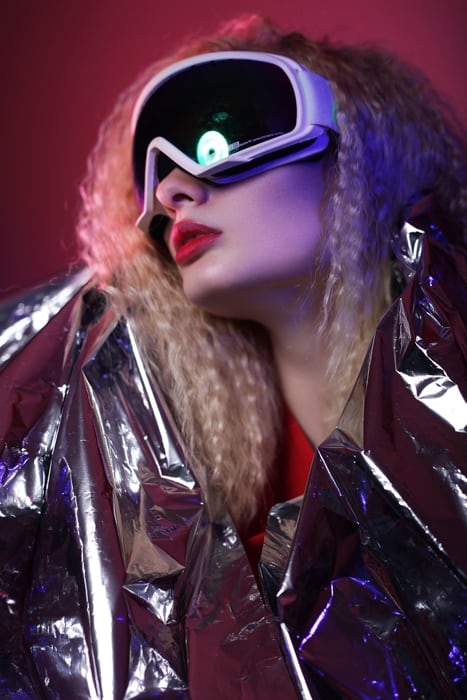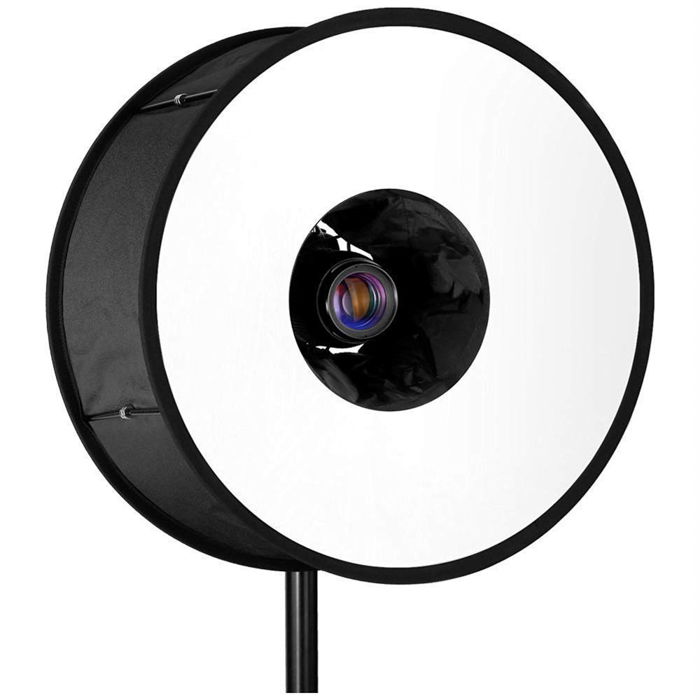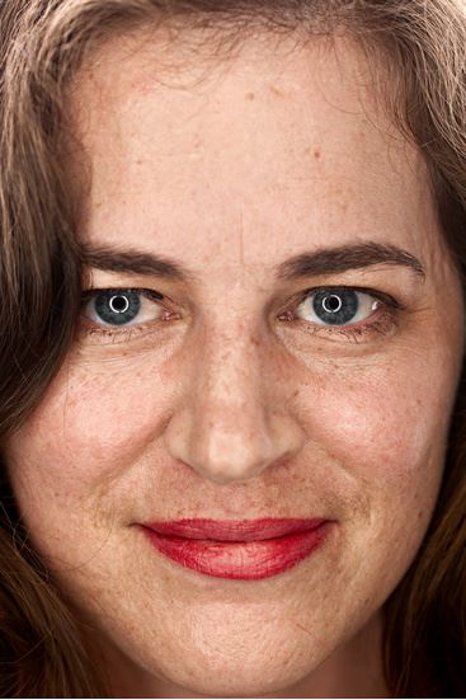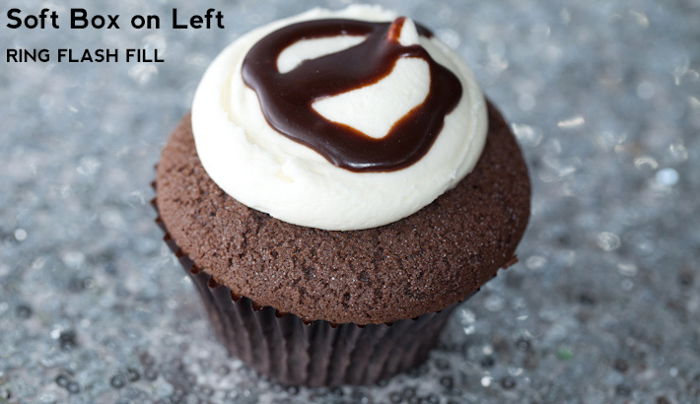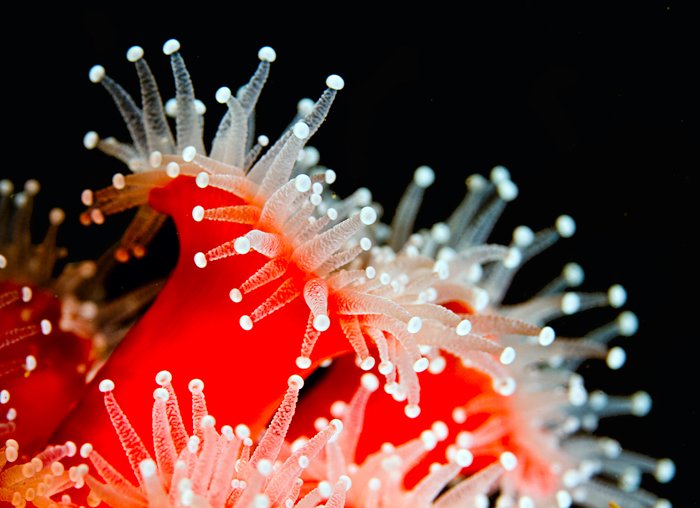What Is a Ring Flash?
There are many ways to artificially light a subject. They range from huge complex strobe systems, down to smaller, and simpler, systems that attach to your camera. The flash gun, such as the Canon Speedlite 600EX II-RT, is a standard. These are used for events, such as wedding and by portrait photographers. Ring flashes are a worthy contender for all sorts of photography. A ring flash is a flash in the shape of a ring, as opposed to a flash gun. The ring shape is important as they are designed to slot around your lens.
Alternatives
For the on-camera ring flash, we recommend the Canon MR-14EX II Macro Ring Lite. Since it’s produced by an OEM (original equipment manufacturer), it’s on the pricey side. For a cheaper alternative, there is the Neewer R-160 Ring Light. The best thing about this is that the batteries are built into the ring itself. This does make the lens a little front-heavy, but it is great for those who don’t want the flash pack to sit on the hotshoe. The Coco Ring Flash Adapter adapts your flashgun into a ring light. This is a cheaper alternative, so you don’t have to buy a dedicated ring flash. For macro photographers, the YN-24EX Macro Ring Flash is slightly different. It doesn’t give you the ring, but it does give you two lights on the east and west axis. The Godox Witstro AR400 is the bridge between ring flash adaptors and dedicated ring flashes. This is very portable and can sit from anywhere off camera. For more power to light larger scenes, go for the Neewer Ring Light Kit. This plugs into the mains, allowing more power. It also means you don’t have to be dependant on battery power. If you plan on using the ring flash a few times, and don’t want to spend a few hundred dollars, there is another way. You can buy a DIY ring flash kit for $24. You need to stick it all together, but produces some beautiful, if somewhat soft, results.
Why Use a Ring Flash?
A ring flash produces a specific type of light. You have no doubt seen the very specific reflected rings, often found in the subject’s eyes. They offer a different type of light spread than a flash gun or studio lighting offers. As the ring flash fits around the lens, the light spreads out evenly over the subject. A flash gun fires from above the camera and can produce some very harsh shadows. A ring light does the same, but it does so around 360° of the subject. Other lights only cover a certain angle and degree of spread. A direct flash was used for many years for fashion photography. Having a strong shadow behind the subject was sought after. A ring flash helps cut down on those harsh shadows. Think of a bust style portrait image where you want to show the models’ hair, make up and jewellery on her neck and wrist. They create even spreads, showing the viewer that every element is just as important as the last. To achieve this professional look, a ring flash is often mixed with other lights. If you are looking for an even light cast, with spectacular light details, a ring flash is for you.
How to Use a Ring Flash?
Ring flashes fit around your lens. They come with screw mounts that will have adaptors, allowing them to fit most sizes. Others allow you to shoot through them. Screw it in and plug it into your camera. Some models have a battery pack that sits in your camera’s hot shoe. this is typical of ring flashes like the Canon MR-14EX II Ring Lite. Other models, such as the Neewer R-160 Ring Light have the battery compartments in the ring itself. Here, the camera connects via a cable. You can get much bigger ring lights that don’t connect to your lens at all. They might not even connect to your camera, as they provide a constant light rather than a flash. These models, such as the Neewer Ring Light draw their light from a mains outlet. For this, the RoundFlash Foldable Ring Flash Diffuser offers a softer light strength. With this larger model, your camera shoots through the ring. This is possible either handheld or by using a tripod. The biggest benefit to having a ring flash is that it is still a light. Even if you don’t what that reflected ring characteristic. Turn it into a simple light by reflecting it in to a studio umbrella. This saves you money. You don’t have to buy any other lighting equipment.
When to Use a Ring Flash
There are many instances where you could use a ring flash. Originally developed for dentists, so they could evenly illuminate a person’s teeth. The commercial photography world picked them up, adapting them for product photography. They started off as being bulky. But technology improved their size while keeping the strength. Ring flashes are cheaper and easier to use than the bigger, more complex lighting systems found in studios. They allowed the photographer to keep their ISO low, allowing better quality images. They do have a softer strength to these bigger machines, but their portability makes up for this. Photographers can experience one or two stops lower light in comparison. But this is why God created the Exposure Compensation setting. Increasing the light in your image is down to your own unique vision and image purpose.
Macro Photography
A ring light is very helpful in macro photography. Especially if you are using extension tubes. As you are getting closer and closer to your subject, you’ll find your lenses stop natural or flash gun light. Having a ring flash at the front element of your lens means having a subject that is well lit. The light fall-off is also even. Here, you might want a ring flash with a dimable strength. This light aims to help keep the ISO down, and allows you to keep fast shutter speeds. Perfect for insects and other subjects that are partial to moving.
Portrait Photography
For portrait photography, a ring flash helps to keep the shadows down. If there are any shadows, they are behind the subject, and unseen by the viewer. The ability for the light to wrap around the subject here is a definite advantage. Perfect for when you are showing many elements within a scene. You can use the ring light as a frame, allowing creative portrait photography to take place. The biggest use of a ring flash for portraits is the catchlight. It’s a common giveaway for how photographers light their subjects. A ring light will show up as a ring in the subject’s eyes. The bigger the light, or the closer you are to the subject, the bigger the reflection. Combined with a soft box, photographers are able to use much bigger ring flashes and right lights. A bigger version helps to light a wide scene or environment. Many photographers use the ring flash as a key light (main light source) or as a fill light (secondary light source). Both can be beneficial for more complex lighting setups.
Food Photography
Food photography is another area where photographers benefit from using ring flashes. They are able to create complicated lighting setups where one light isn’t enough. By having a light on the camera, you allow more portability. You have light readily available from the perspective you shoot from. Again, it works as a fill or key light. Photographers can use it to expose details to high key, contrasty scenes.
Fashion Photography
Fashion photography is one of the largest areas where photographers use ring flashes. Like portrait photography, you need even light without strong shadows. You can add gels to them. This is a little more complicated than using a flash gun or other studio lights. Again, photographers use them as key lights, where other lights fill in any shadows. They also fill in to bring out subtle details.
Product Photography
The ring flash started out by photographing teeth, so any item benefits from this type of flash. Each product looks better with an even light coverage. There are no distractions from harsh shadows. They allow the light to be constantly from the camera’s perspective. This might not feel like a big deal, but it saves in time and energy.
Underwater Photography
Underwater photography is another area where ring flashes can benefit your capturing. It keeps all your gear centralised, and around the camera’s balance center. It will help you with underwater macro photography, and keeping any subject evenly lit.



